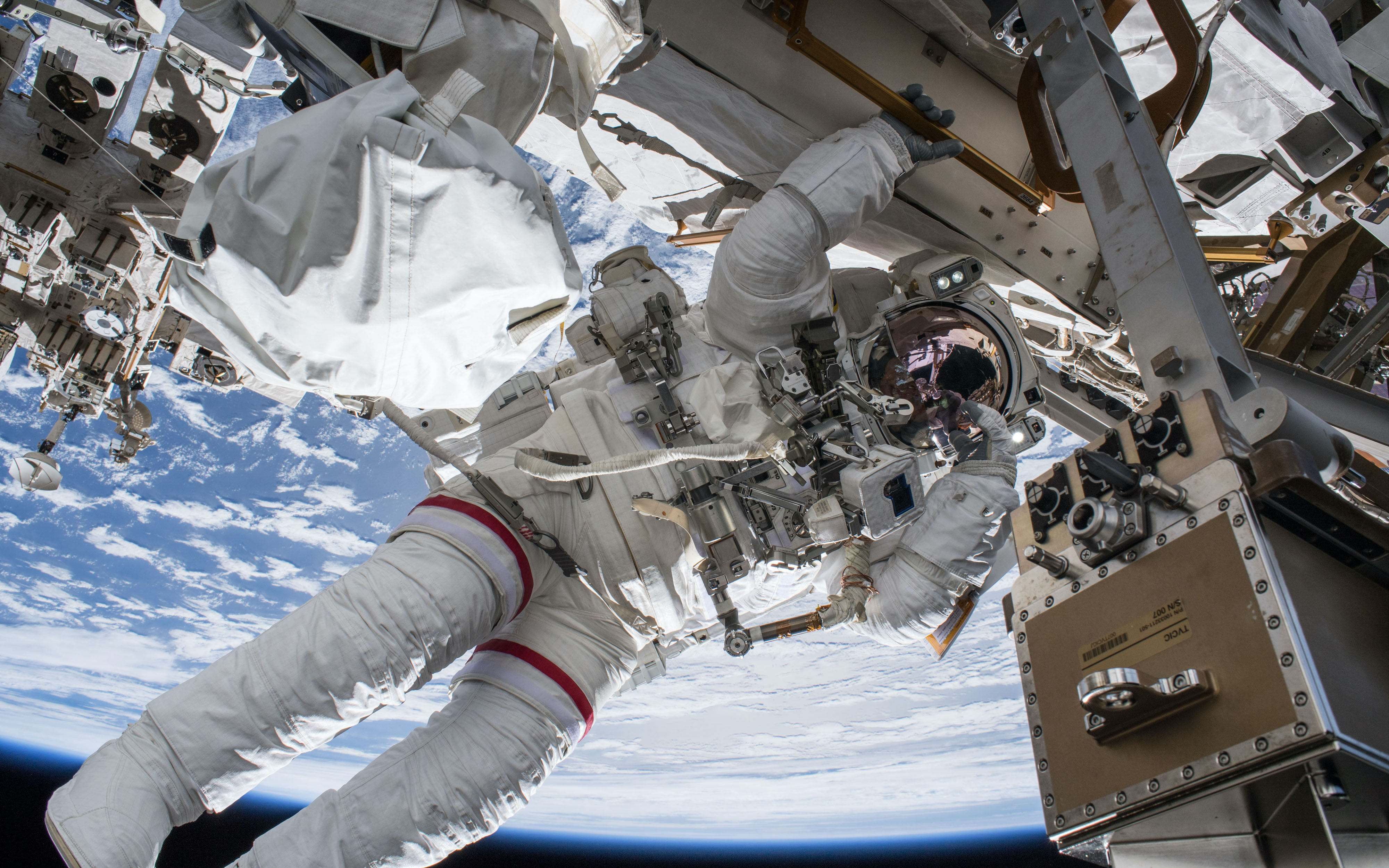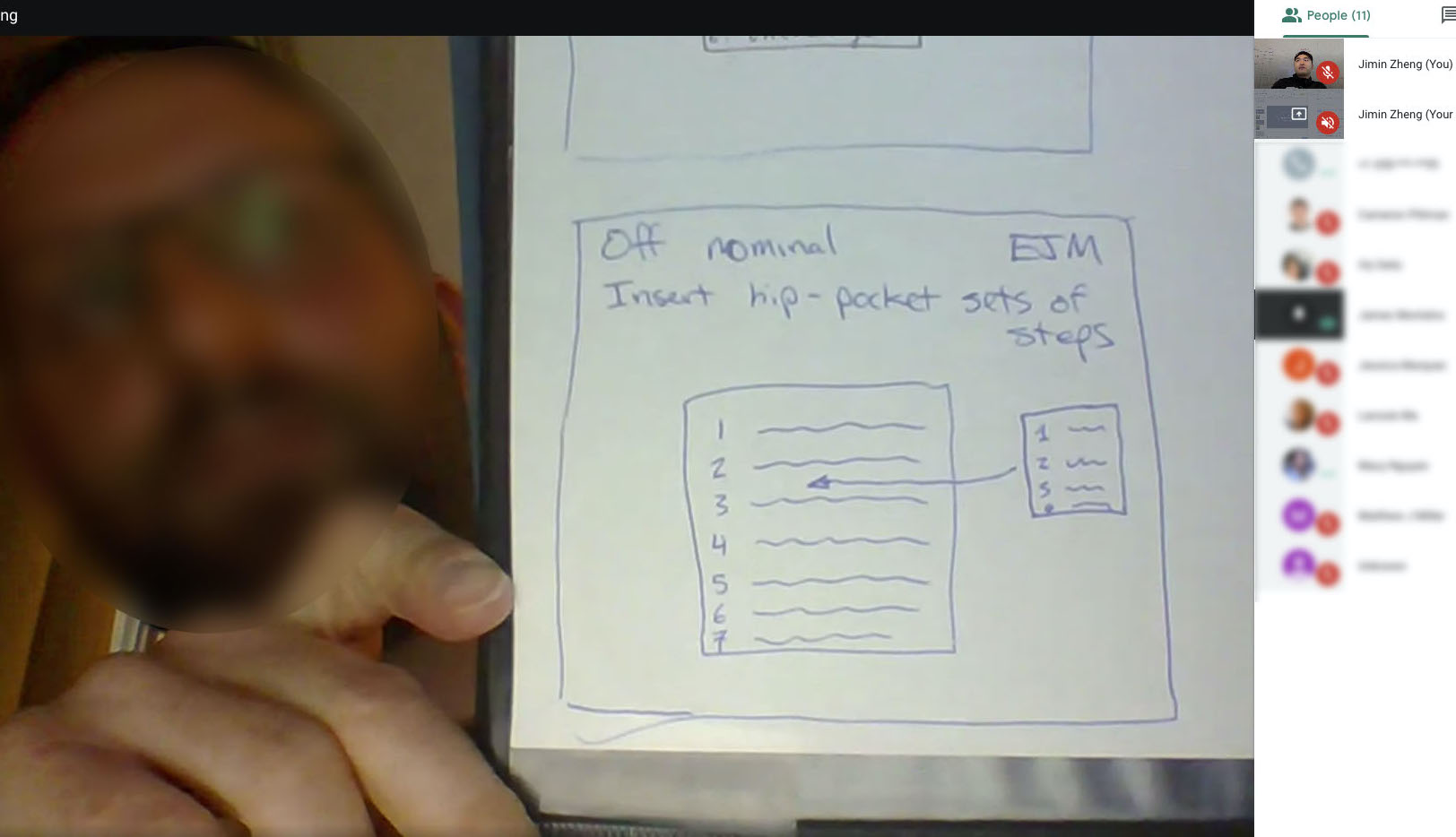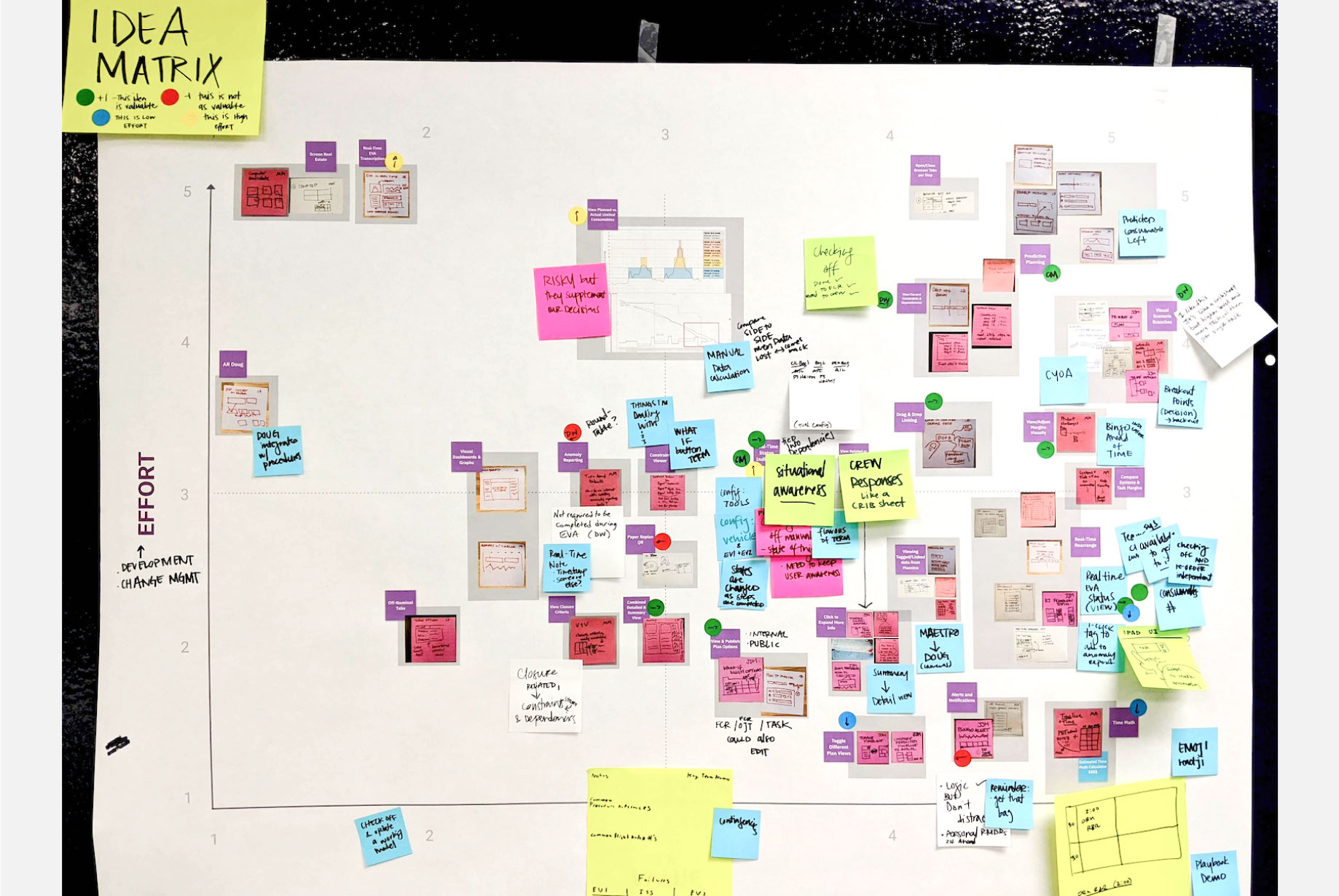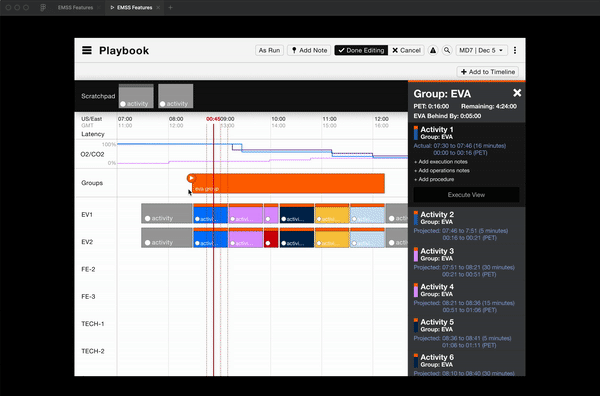EVA Operations Systems (EOS)
Digitizing spacewalks on ISS
Commonly known as “spacewalks,” extravehicular activities (EVA) are activities that are done by astronauts while outside of a spacecraft. EVA’s are ultra-high-stakes events and involve a tremendous amount of coordination and planning; however, as technologically sophisticated as the working environments are, the planning and execution of EVA plans are surprisingly low-tech. Currently, the procedure of an entire 6-hour EVA is created in MS Word and referred to by mission control in the form of physical paper, which has inherent inefficiencies. As a result, our team was tasked with envisioning new features in our mission planning tool, Playbook, that would bring the benefits of a digital interface to the EVA execution process.
Role: Design Lead
Contribution: Project Management, Domain/User Research, UX/UI Design, Information Architecture, Usability Testing, Systems Integration
Team/Timeframe: NASA/8 Months




